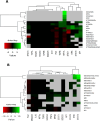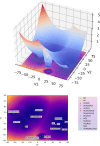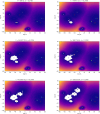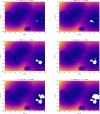Tumor microenvironment noise-induced polarization: the main challenge in macrophages' immunotherapy for cancer
- PMID: 39827422
- PMCID: PMC12095459
- DOI: 10.1007/s11010-025-05205-2
Tumor microenvironment noise-induced polarization: the main challenge in macrophages' immunotherapy for cancer
Abstract
Disturbance of epigenetic processes can lead to altered gene function and malignant cellular transformation. In particular, changes in the epigenetic landscape are a central topic in cancer biology. The initiation and progression of cancer are now recognized to involve both epigenetic and genetic alterations. In this paper, we study the epigenetic mechanism (related to the tumor microenvironment) responsible for increasing tumor-associated macrophages that promote the occurrence and metastasis of tumor cells, support tumor angiogenesis, inhibit T-cell-mediated anti-tumor immune response, and lead to tumor progression. We show that the tumor benefits from the macrophages' high degree of plasticity and larger epigenetic basins corresponding to phenotypes that favor cancer development through a process that we call noise-induced polarization. Moreover, we propose a mechanism to promote the appropriate epigenetic stability for immunotherapies involving macrophages, which includes p53 and APR-246 (eprenetapopt). Our results show that a combination therapy may be necessary to ensure the proper epigenetic stability of macrophages, which otherwise will contribute to cancer progression. On the other hand, we conclude that macrophages may remain in the anti-tumoral state in types of cancer that exhibit less TP53 mutation, like colorectal cancer; in these cases, macrophages' immunotherapy may be more suitable. We finally mention the relevance of the epigenetic potential (Waddington's landscape) as the backbone for our study, which encapsulates the biological information of the system.
Keywords: Cancer immunology; Epigenetics; Macrophage polarization; Random perturbations; Tumor Microenvironment.
© 2025. The Author(s).
Conflict of interest statement
Declarations. Conflict of interest: The authors have no relevant financial or non-financial interests to disclose.
Figures









Similar articles
-
Macrophage polarization in the tumor microenvironment: Emerging roles and therapeutic potentials.Biomed Pharmacother. 2024 Aug;177:116930. doi: 10.1016/j.biopha.2024.116930. Epub 2024 Jun 14. Biomed Pharmacother. 2024. PMID: 38878638 Review.
-
Mechanistic studies of tumor-associated macrophage immunotherapy.Front Immunol. 2024 Sep 30;15:1476565. doi: 10.3389/fimmu.2024.1476565. eCollection 2024. Front Immunol. 2024. PMID: 39403370 Free PMC article. Review.
-
Histone modifications and metabolic reprogramming in tumor-associated macrophages: a potential target of tumor immunotherapy.Front Immunol. 2025 May 1;16:1521550. doi: 10.3389/fimmu.2025.1521550. eCollection 2025. Front Immunol. 2025. PMID: 40375990 Free PMC article. Review.
-
Macrophage Polarisation in the Tumour Microenvironment: Recent Research Advances and Therapeutic Potential of Different Macrophage Reprogramming.Cancer Control. 2025 Jan-Dec;32:10732748251316604. doi: 10.1177/10732748251316604. Cancer Control. 2025. PMID: 39849988 Free PMC article. Review.
-
Tackling tumor microenvironment through epigenetic tools to improve cancer immunotherapy.Clin Epigenetics. 2021 Mar 24;13(1):63. doi: 10.1186/s13148-021-01046-0. Clin Epigenetics. 2021. PMID: 33761971 Free PMC article. Review.
References
Publication types
MeSH terms
LinkOut - more resources
Full Text Sources
Medical
Research Materials
Miscellaneous

